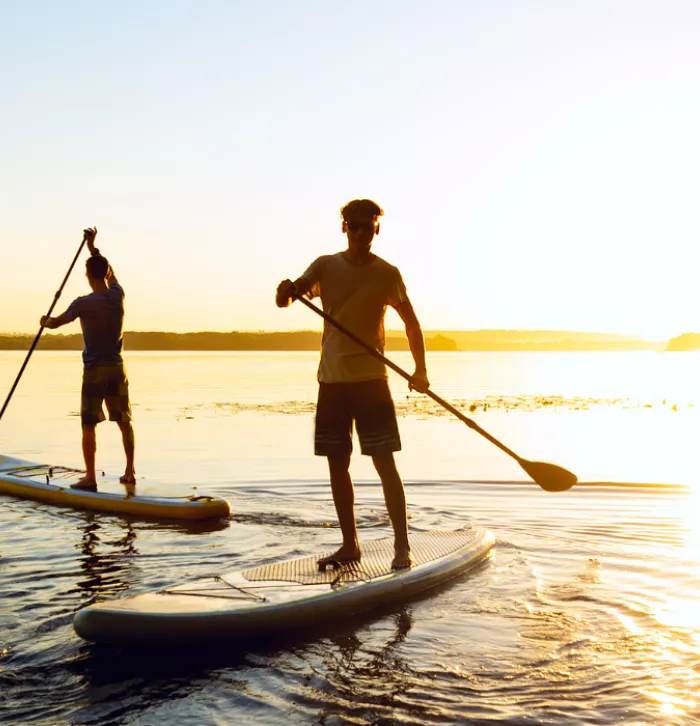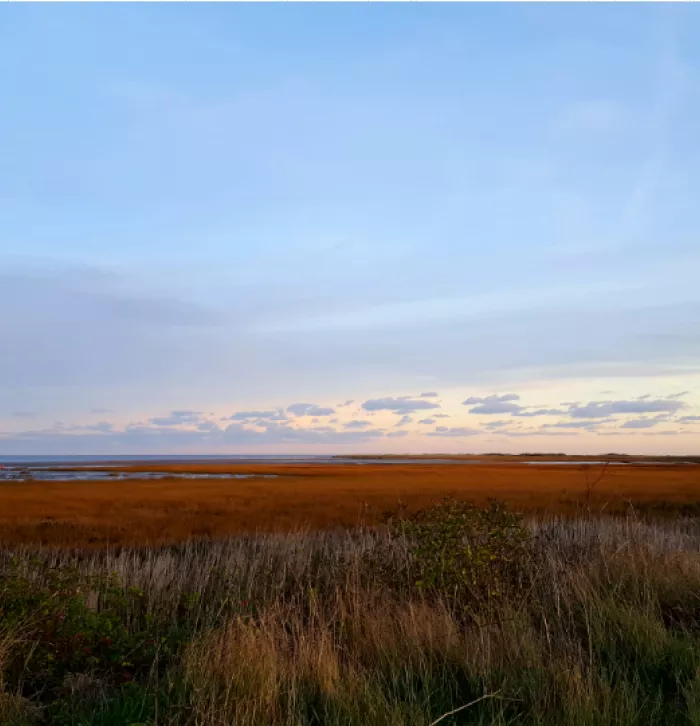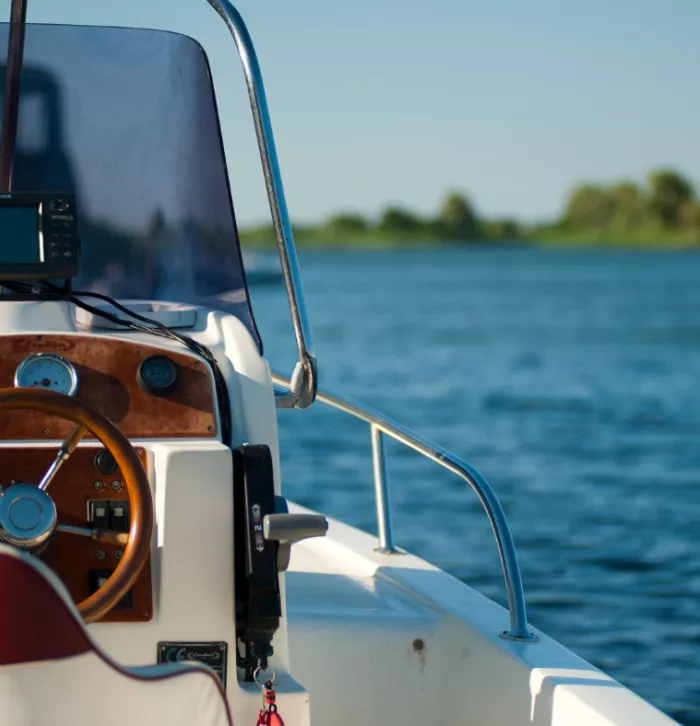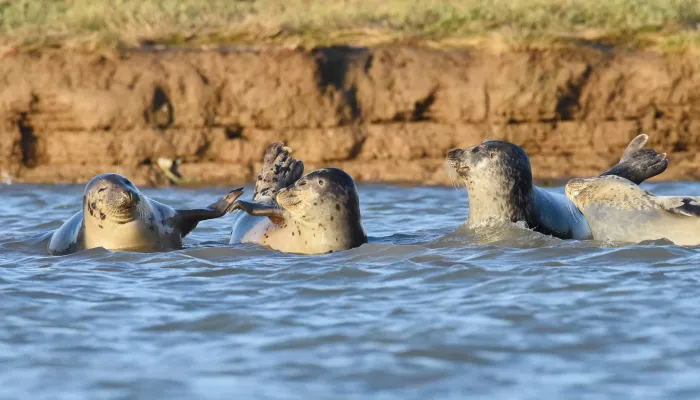The UK is home to over a third of the world’s grey seal population. A globally rare species resident in Great Britain, grey seals are the equivalent of an African elephant. What’s more, harbour seals are in alarming decline.
Seals are vital to the health of our seas. Scientific research has shown that top predators such as seals, contribute to the maintenance of a healthy ocean balance upon which all other life depends. In fact, flourishing seal populations signify a healthy marine ecosystem, with thriving fish stocks and fisheries. It is therefore more important than ever that we give these seals space to rest, digest, restore their energy and feed their pups.

Advice for paddlers
Seals often show more signs of disturbance due to the presence of paddlers than motorised craft.

Advice for visitors
Enjoy the precious and special moment and spread the word about how to view seals safely.

Advice for boat operators
How to approach and watch seals when operating watercraft.
FAQs
Seals can be disturbed if people or dogs get too close, cause too much noise or startle them. Disturbance can happen from the land, sea and air.
A seal is aware of your presence if it Is looking at you, whether on land or in the water. This means its’ flight or fight response has already been triggered. If a seal is panicked enough by a potential threat both pups and adults may try to flee, usually to the water. Causing seals to flee can result in:
- injuries such as cuts
- ripped out claws
- sand graze on flippers.
- A stampede leading to smaller individuals may be crushed.
- a surge of the stress hormone cortisol which is bad for their long-term health.
These disturbances all use up vital energy reserves. Disturbance impacts can be long term and affect a seal's chance of survival, even months later. Many young seals don’t reach their second birthday, so lessening our impacts on them is key to their future survival. Luckily there are many ways we can avoid disturbing seals.
You can report any seal disturbance you witness in the waters around Pegwell Bay and the Stour Estuary by logging this with us. Information on incidents of disturbance can help us to make a difference to enabling us to better inform the appropriate authorities of the breaking of wildlife related byelaws.
If you spot an injured seal, please contact British Divers Marine Life Rescue on 01825 765546 (office hours) or 07787 433 412.
If you find a dead seal on the shore, contact the local authority. Call 01843 577000 for Thanet District Council.
If you spot a seal, please help us to record sightings by reporting to ZSL #inthethames
If you see a seal on land
If you spot a seal anywhere around the Kent coastline, do not approach it. Keep a large distance between yourself and the seal and remain quiet. Remember, if a seal is looking at you then it is disturbed, so move further away.
Keep your dog on the lead.
Please note that it is normal for seals to haul out to rest so a seal on the beach doesn’t necessarily need any help.
Common seal pups are often left alone while their mother is looking for food. If you spot a live seal pup on the shoreline, observe it from a distance, look for signs of a cough or injury. If it is in a safe place and showing no obvious ill effects. leave it alone and check again in 24 hours.
If the seal is clearly injured or in distress, please contact British Divers Marine Life Rescue (BDMLR) on 01825 765546. Never get too close or attempt to move a seal yourself. Seals can give a nasty bite when trying to defend themselves.
If you see a seal at sea
Always avoid being in the sea anywhere near to seals on land. The minimum distance you should leave is about 100 metres.
If you are on a water craft in the sea and come across seals, be as quiet as possible and maintain a constant speed and direction. Never try to get close to seals - seals may be even more startled by your sudden appearance.
It is important to remember that, whilst regular tour boats may be ignored by seals, kayaks and paddle boarders may cause seals to flee into the water. If you do come across any seals, do not paddle towards them. Instead, paddle backwards to get the best view. For more information on paddling safely near seal populations, please see Paddling safely near native seal populations.
Remember to look up and follow the coastal codes in the area you are visiting.
A great place to watch seals without disturbing them is Pegwell Bay Country Park. Follow the coastal path south towards Stone Lees Nature Reserve then, from here, try to spot the grey and common seals that rest on the sandbanks in the Stour Estuary. There is no access to the mudflats or saltmarsh so take your binoculars for an easy view.
For a view of seals in the Swale Estuary, at low tide you can also see seals from Oare Nature Reserve resting on the Horse Sands from the Coastal Hide.
Sadly, there have been increased reports of seals requiring rescue by the British Divers Marine Life Rescue. On top of general disturbance by human activity, seals are also currently facing uncertain future with climate change altering ocean currents and prey availability while worsening storms and rising sea levels are affecting vital resting and breeding sites. Toxic pollutants continue to enter waterways and the ocean and entanglement in marine litter and ghost fishing gear remains to be a huge threat to seals.
You could join one of our coastal guided walks, or be part of the solution to marine litter by joining a beach clean and helping to remove rubbish and ghost netting: Events | Kent Wildlife Trust
For more information on how you can help support our work to protect coastal wildlife please contact Nina Jones, Protected Area Warden: [email protected]

